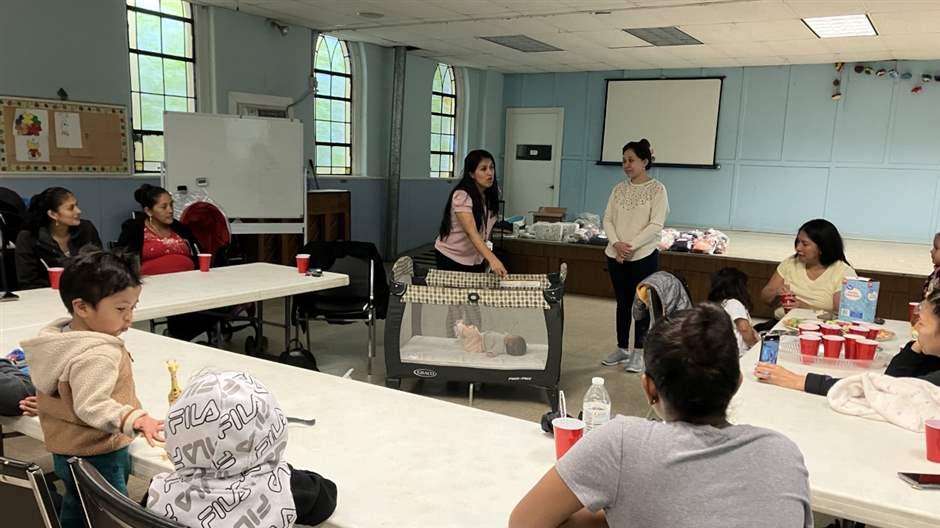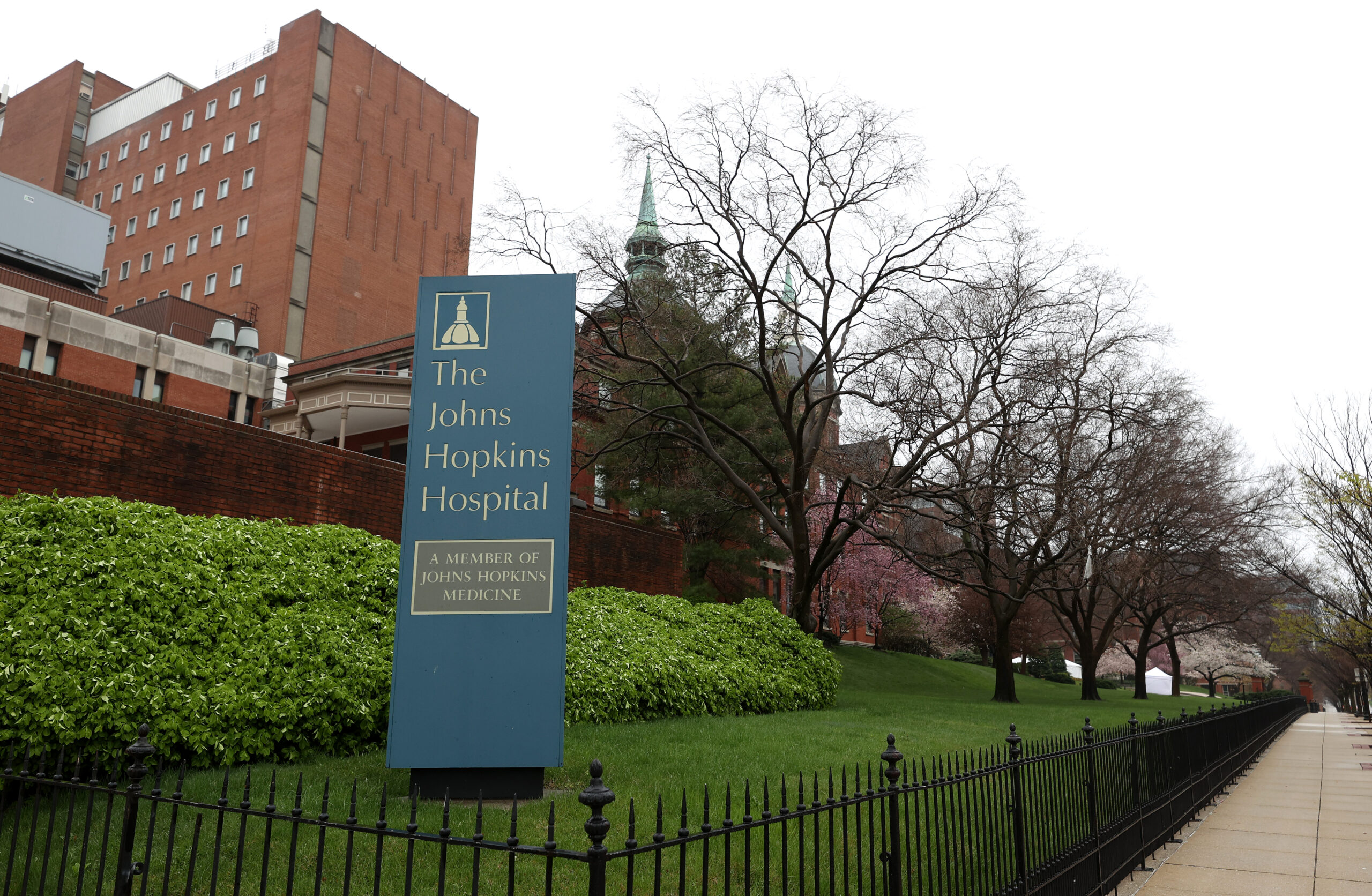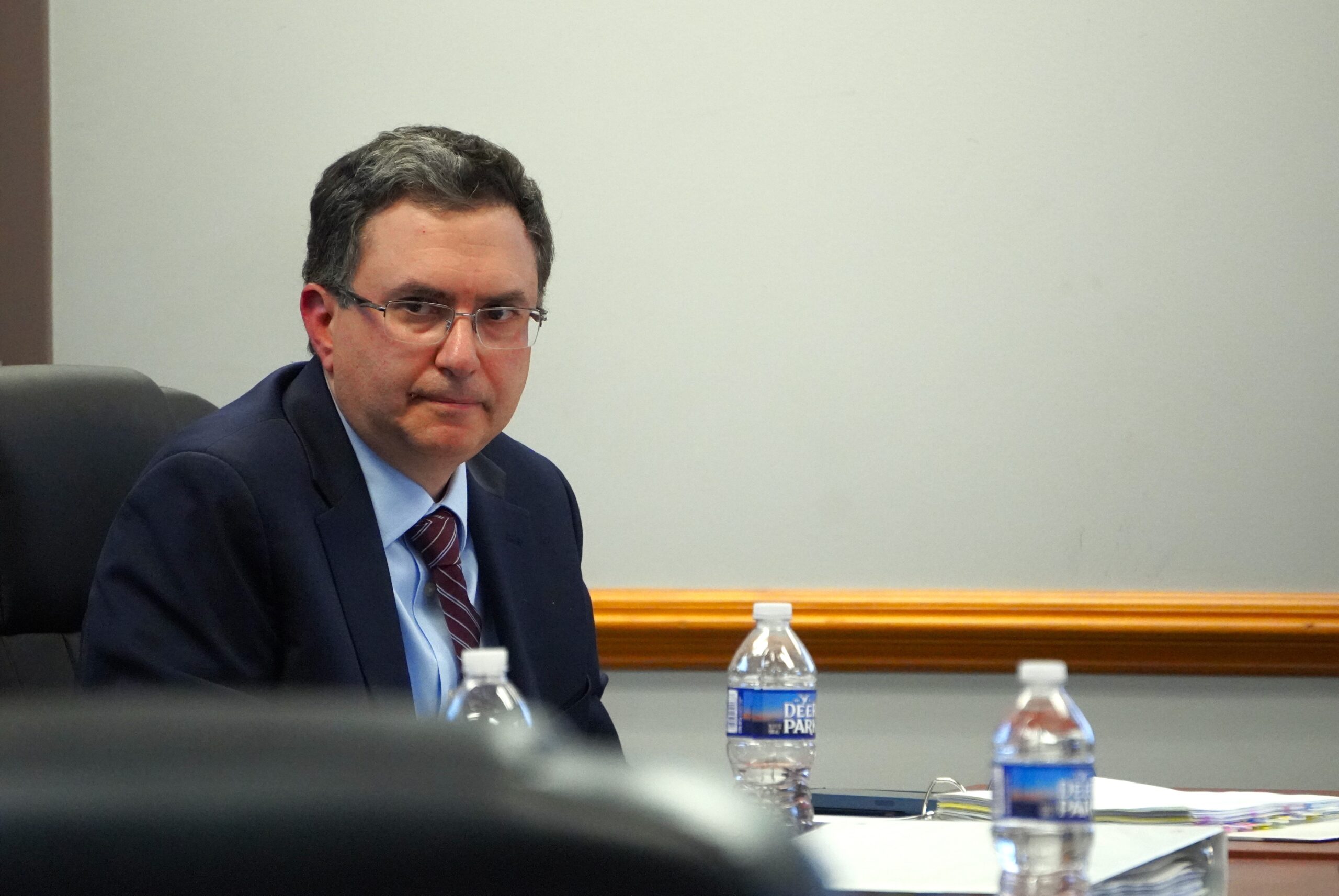Babies kept dying in Baltimore. People worked together to understand why

By Michael Ollove
Stateline, an initiative of The Pew Charitable Trusts, provides daily reporting and analysis on trends in state policy. Read more at Stateline.org.
Nine women, some mothers, some expecting, sit chattering at a U-shaped table in a church hall on an October morning, happy to be out of the downpour outside. A few have young children underfoot. Guadalupe Franco, a community health worker, once as hungry for good parenting tips as these women are now, stands before them with a portable crib and begins a lesson on how to avoid endangering a sleeping infant.
Babies should sleep alone, she explains in Spanish, on their backs and in a crib with tightly fitted sheets. Some of the women nod. No stuffed animals, Franco says firmly. No blankets. No crib bumper pads. All those items present smothering risks for a new one, who won’t have the strength to push free if soft material were to block their breathing.
None of this guidance is theoretical to her, says Franco. When her two teenagers were babies, she recalled, she thought nothing of having them sleep in bed with her and her husband.
On the day she brought her second baby home from the hospital, she left him sleeping on the couch nestled among pillows when her husband beckoned her from the next room to come eat dinner. It was only when she heard a strange sound, something like the mewling of a cat, that she came back. She discovered her son’s face buried in a cushion and the color of a plum.
“I saw him choking,” she recalled later. “He was dying.”
Luckily, she got there in time. Her husband performed CPR, and the baby was revived.
“I was 20,” Franco tells the women, their faces rapt. “I didn’t know any better.”
The episode led her to the work that brought her to this church hall today. To keep babies safe. Alive.
This class represents one pillar in Baltimore’s strategy to use simple communication, outreach and education to turn back a frightening trend in infant deaths. The United States has a higher infant mortality rate than most other developed countries. And Baltimore’s success in the past decade may make it a model for other U.S. cities and counties working to keep more of their babies alive.
Not long ago, Charm City’s infant mortality rate had been staggeringly high, among the worst in the country. In 2008, the city reported 120 infant deaths. The next year was even worse — 128 dead babies.
That year, the city recorded 13.5 infant deaths for every 1,000 live births, the worst rate in at least five years.
Nationally, the rate was 6.4 deaths per 1,000 births. (Infant mortality generally refers to a death before the first birthday.)
As bad as the overall numbers were in Baltimore, the rate was even worse for Black infants, who were more than five times as likely to die as white babies.
“When that happened, The Baltimore Sun wrote an editorial that mentioned my name because I basically said, ‘We’re failing,’” said Joshua Sharfstein, then the city’s health commissioner and now a vice dean at the Johns Hopkins University Bloomberg School of Public Health.
Sharfstein and a collection of private and public partners launched B’More for Healthy Babies, a collaboration including city officials, universities, faith groups, health care providers and other nonprofits to identify women at risk of losing newborns and link them to services to mitigate those risks.
By 2019, the city had reduced its infant mortality rate to 8.8 deaths per 1,000 live births and its Black infant mortality rate by nearly 40%, though at 11.4 deaths per 1,000 live births, it remains higher than for white infants. Nationally, the Black infant mortality rate was 10.6 per 1,000 live births in 2019 compared with 4.5 for white infants.
COVID-19, which has consumed so much of the resources of public health efforts in Baltimore and elsewhere since 2020, has led to the reversal of some of those gains, although city officials are hopeful the setbacks will prove short-lived.
The first part of Baltimore’s strategy is to identify pregnant women or new mothers whose babies are at high risk because of their parents’ poverty, illness, lack of education and uncertain access to health care. Those residents are connected to services that can mitigate the risks; assistance includes classes on safe sleep, nutrition, breastfeeding and parenting skills.
Baltimore’s infant mortality rate remains higher than the national average, but it is doing better than other comparable cities, said Chad Abresch, executive director of CityMatCH, a national membership organization that brings together maternal and child health public health workers.
“Baltimore is not alone but is part of a small cohort of cities that are heading in the right direction,” Abresch said.
Disjointed programs
Before B’More for Healthy Babies, multiple public and private programs were trying to reduce the infant mortality rate without knowing what the others were doing or where they were doing it. New mothers and families expecting a baby had no idea whom to call for help, or what services might be available.
At the time, there were half a dozen home-visiting programs in the city, none communicating with others, said Cathy Costa, director of strategic initiatives for the city health department’s Bureau of Maternal and Child Health. Some focused on child abuse and neglect, others on maternal health. Some were funded by city agencies, others by state agencies or private foundations.
“All were on top of each other with the same clients, and all of them underutilized,” Costa said. “There was no consistency, no coordination.”
Sharfstein and Rebecca Dineen, the new head of the department’s maternal and child health bureau, persuaded agencies and foundations to funnel all money related to infant mortality through the city’s health department to avoid redundancy and inefficiency. CareFirst BlueCross BlueShield, the largest funder, pledged $1 million a year to help launch a new approach.
The city created a central home-visiting system, standardized training in child safety, nutrition and parenting skills, and divided the city geographically among the organizations conducting the visits.
Digging into the data, Dineen’s team detected three leading contributors to infant deaths in the city: low birth weights, unsafe sleeping conditions and birth defects.
The data showed that sleep-related causes were the No. 1 reason babies died after leaving the hospital following delivery, Dineen said. “Almost 100% of those babies dying in their sleep were Black babies,” she added.
Other factors, though, also contributed to the city’s infant mortality rate. Sex education had deteriorated since the 1990s, Dineen said, and teens had limited access to family planning resources. The city needed to address both situations, she said, because of the association between teen pregnancy and infant mortality.
Breaking dated generational lessons has been another challenge, not only for immigrants but native-born mothers as well.
“Grandmothers will say, ‘I raised eight babies, and they slept in my bed and on their tummies,’” said Pamela Brown, director of maternal and child health and multicultural programs at Baltimore Medical System.
Brown said there are similar issues with breastfeeding, which B’More for Healthy Babies promotes because of its association with lower rates of infant mortality. While many Latino women come from cultures where breastfeeding is widely practiced, Brown said, there is more hesitation among Black women, a vestige from slavery, she suspects, when Black women were forced to be wet nurses to white babies.
Structural racism remains a problem: It often is harder for Black people to receive quality health care. Recognition of that disparity prompted the Maryland legislature in 2020 to require everyone who works in perinatal care to undergo implicit bias training.
The fulcrum in Dineen’s plan was a simple form that already existed — a health risk assessment for expectant mothers. The form, required in Maryland for pregnant beneficiaries of Medicaid and encouraged for all expectant women, flags patients for an array of risk factors. They include mental illness, substance misuse, financial insecurity, chronic illness, domestic violence, housing and food insecurity, absence of social and emotional support and histories of having pre-term deliveries or babies with low birth weight.
In Baltimore, a nonprofit called HealthCare Access Maryland now uses the forms to connect each at-risk patient with services based on their specific need.
Some new mothers receive visits from a nurse or social worker, who can help make the home safe for an infant. They might also receive a free portable crib or other help. Costa said there are between 800 and 1,000 home visits a year.
The program has established hubs through which it offers numerous education classes on nutrition, breastfeeding, exercise, safe sleep and parenting skills. The city also enlisted the Johns Hopkins Center for Communication Programs, experts in public health messaging, to develop materials targeted to expectant and new mothers.
Generational change
On a cool late afternoon earlier this month at a recreation center in Patterson Park on Baltimore’s east side, seven women, some with young kids, sat on metal chairs for their final nutrition class, run by an instructor from the University of Maryland.
She explained to the mothers that they should carefully read food labels for ingredients and calories, and that they and their children should avoid consuming too much sugar.
One of the women, Waldina Duarte, a Honduran immigrant and the mother of girls ages 3 and 9, said through a translator that she had taken several baby classes though the B’More Healthy Babies program, including one on safe sleep. Her older daughter had slept with Duarte in her bed for her first three years. Thanks to the instruction, her second daughter slept on her back, alone, in a crib.
The lesson stirred a memory. Infants sleeping with parents, she said, had been the norm in Honduras, where many couldn’t afford a crib. Now that she thought about it, that probably explained a family tragedy, the sudden death of one of her grandmother’s sons in infancy.
“They had all slept in the same bed,” Duarte said. “Three children, the mother, and the baby.”
With COVID-19 receding, more health department staff are returning to their maternal and child health duties, and in-person functions have resumed.
Still, at a Zoom meeting last week with some B’More for Healthy Babies partners, Pamela Brown reported sobering news: By August of this year, 14 babies had died of suspected sleep-related causes. In 2021, she said, there were a total of 14 such deaths for the entire year.
“We are losing too many babies,” she said. “We’ve lost ground.”



 Creative Commons Attribution
Creative Commons Attribution